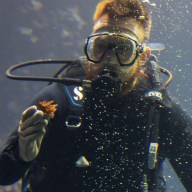There’s a famous scene in the 1980 movie Caddyshack that shows a chocolate bar being dropped into a country club swimming pool. Horrified swimmers clear the pool because they think the clean blue waters have been sullied by — well, the unmentionable.
But what about the contaminants you can’t see?
It’s not something you really want to ponder as the weather warms up and you head to your public pool for a refreshing dip, but a recent U.S. survey found that nearly one in five Americans admit to peeing in the pool.
“People sometimes are reluctant to say that they’ve done it but they think that everyone else has done it,” says Linda Golodner, president emeritus of the National Consumers League and vice-chair of the Water Quality and Health Council.
“We found 17 per cent say that they’ve done it and 78 per cent say they’re convinced that fellow swimmers are guilty.”
And although public pools everywhere have signs telling bathers to shower before entering the pool deck area, approximately one third said they don’t stop to wash and three quarters said that fellow swimmers don’t shower before swimming.
“We found it quite interesting to get these results,” says Golodner from Washington, D.C. “We knew there was an issue, but we didn’t have any numbers behind it.”
Altogether 1,000 adults were surveyed online for the council between April 30 and May 3 by TNS Omnibus, and the margin of error was plus or minus 3.1 percentage points, at 95 per cent confidence.
The council is made up of independent scientific experts, health professionals and consumer advocates who advise the Chlorine Chemistry Division of the American Chemistry Council, an industry trade association.
Cathy Hughes, a facility manager at the University of Toronto’s faculty of physical education and health, says she’s not surprised by the finding that 17 per cent of respondents admitted to urinating in a pool.
Assuming that a facility is meeting the health regulation requirements for the province, which sets the chlorine levels to treat the water, then there isn’t a problem of infection, she says. “Anything that gets into the water is pretty well killed instantaneously,” says Hughes, who oversees three University of Toronto pools.
“The bigger concern is actually air quality, not water quality, which most people don’t realize.”
That’s because when uric acid from urine mixes with chlorinated water, chloramines are formed. These, in turn, form into the gas trichloromethane, which is not good to breathe for long periods.
The gases tend to sit low on the water’s surface, which is where swimmers breathe, Hughes explained, adding that it’s more of an issue at indoor pools where the breezes can’t blow the gases away.
It is thought these gases pose a health risk to people who breathe them in frequently.
Swimming tips
The U.S. Centers for Disease Control and Prevention provides these tips for healthy swimming:
• Don’t swim when you have diarrhea.
• Don’t swallow pool water.
• Shower with soap before swimming and wash hands after using the toilet or changing diapers.
• Take your kids on bathroom breaks or check diapers often. Don’t change diapers at poolside.
• Wash children thoroughly (especially the rear end) with soap and water before they go swimming.
















